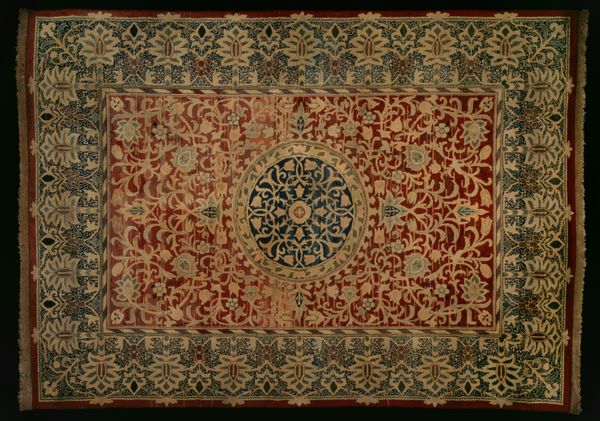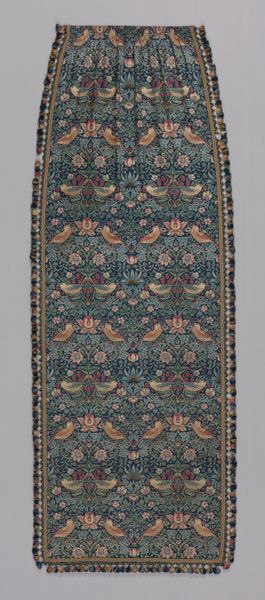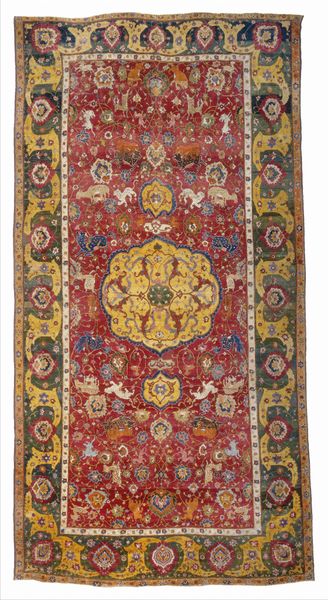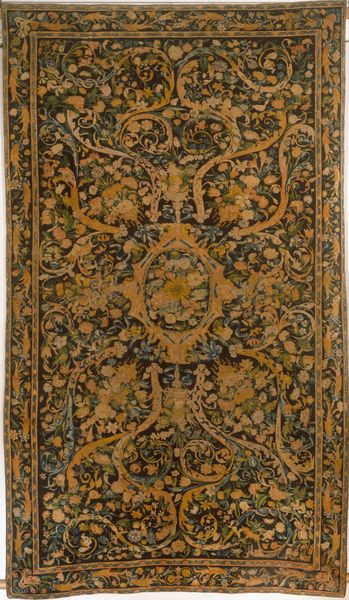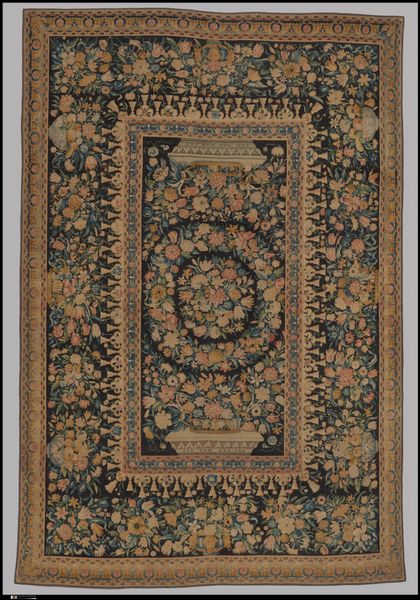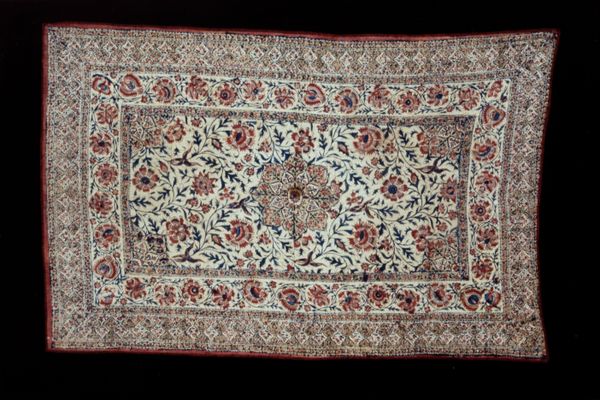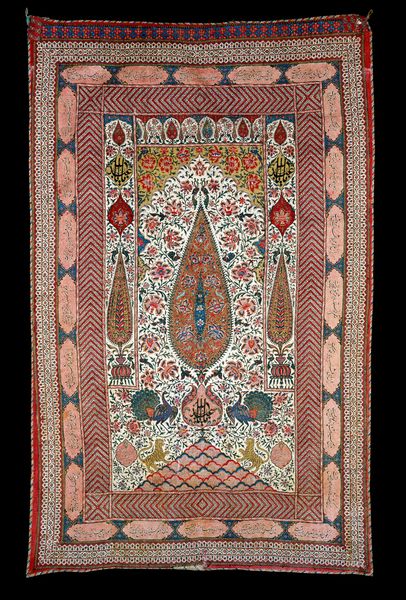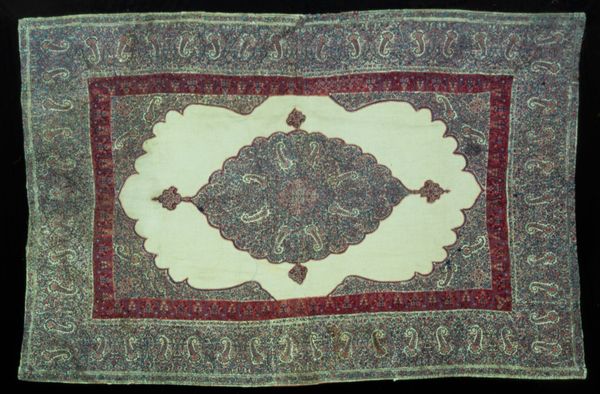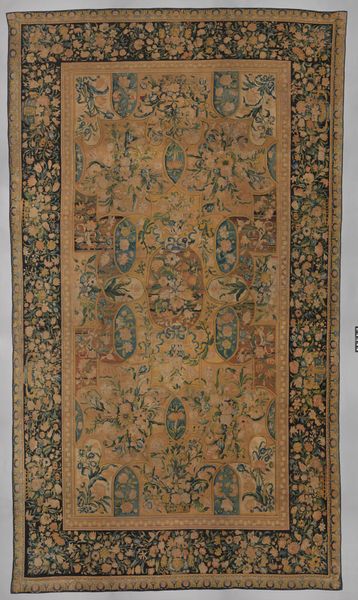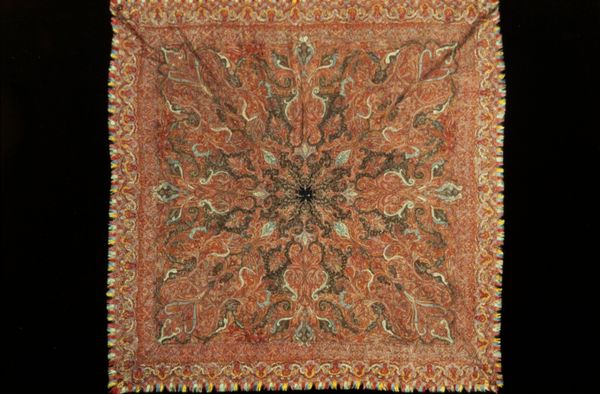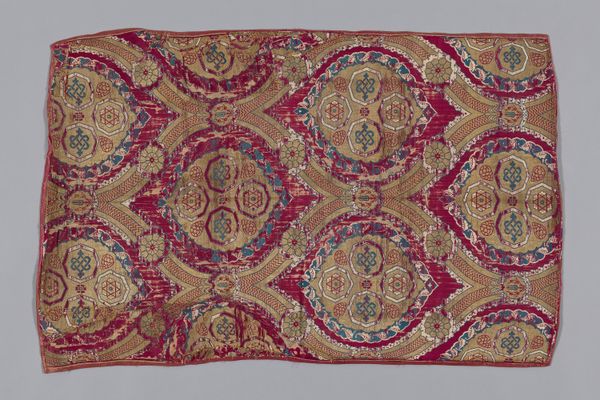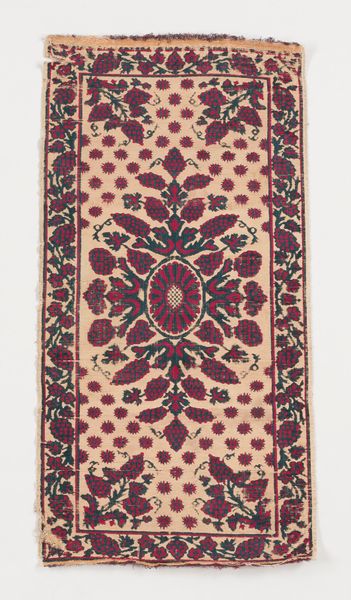
textile, sculpture
#
pattern heavy
#
natural stone pattern
#
naturalistic pattern
#
textile
#
flower
#
text
#
geometric pattern
#
organic pattern
#
sculpture
#
repetition of pattern
#
wooden texture
#
regular pattern
#
pattern repetition
#
decorative-art
#
layered pattern
Dimensions: Overall: 203 x 156 1/4 in. (515.6 x 396.9 cm)
Copyright: Public Domain
Curator: This striking textile is the Holland Park carpet, created between 1885 and 1899 by the renowned British artist William Morris. It’s now held in the collection of the Metropolitan Museum of Art. Editor: Immediately, the density strikes me. The color palette is muted—a dusky blue overlaid with earthy reds and tans—but the pattern itself is incredibly rich and intricate. It’s almost overwhelming at first glance. Curator: Morris was deeply inspired by the natural world. The flowers and foliage aren’t literal depictions, but they evoke an idealized, abundant landscape. You see the influences of the Arts and Crafts movement very strongly here, don’t you? Editor: Absolutely. There is a clear visual structure present as well, a very formal mirroring in the central register that creates this powerful symmetrical arrangement with the central blossoms at top and center. It offers visual balance in what might otherwise devolve into chaotic naturalism. Curator: These stylized botanical forms, recurring across centuries in decorative art, resonate with ideas of renewal, growth, and the beauty of the earthly realm, what's more is the contrast and relationship with our human experience with nature. Morris’s designs frequently carried implicit social commentary, championing craftsmanship against industrialization. Do you see that embedded here? Editor: The visual texture implies an attention to detail at scale that gestures against the grain of machine made textiles of the era. The tension is balanced though as, in other formal structures of visual art and textile, the implied depth through layered design elements lends itself to both flat pattern-making but also dynamic three-dimensionality. It’s very complex, indeed. Curator: Morris saw beauty as intrinsically linked to social well-being. His designs weren’t merely aesthetic, but also meant to promote a healthier relationship with the built environment. Editor: I agree; engaging with such complexity asks viewers to stop and unravel—it cultivates active looking in an environment of increasingly passive seeing. Curator: Looking closer and through that historical lens really reveals how this artifact reflects long standing and modern anxieties. Editor: I appreciate you connecting the design to historical themes. Analyzing pattern this way can often unearth so much, just beneath the surface of appealing art objects.
Comments
No comments
Be the first to comment and join the conversation on the ultimate creative platform.

